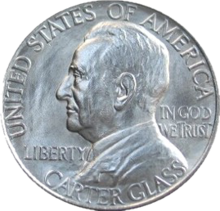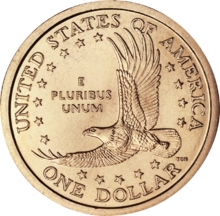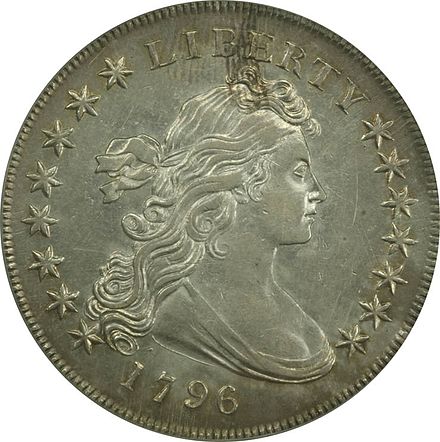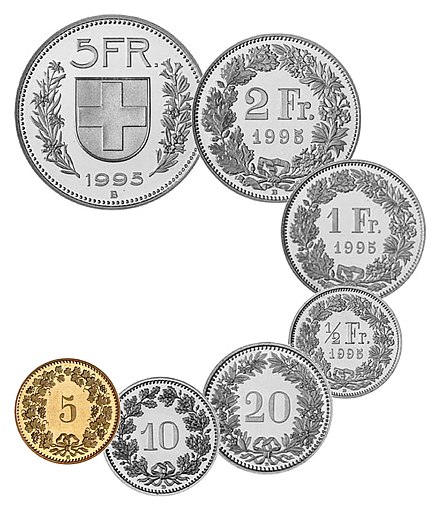
La numismática es el estudio o colección de la moneda , incluidas monedas, fichas, billetes, medallas y objetos afines.
Los especialistas, conocidos como numismáticos , suelen caracterizarse como estudiantes o coleccionistas de monedas , pero la disciplina también incluye el estudio más amplio del dinero y otros medios de pago utilizados para resolver deudas e intercambiar bienes .
Los coleccionistas clasifican las primeras formas de dinero utilizadas por la gente como "raras y curiosas", pero se excluye el uso de otros bienes en el trueque, incluso cuando se utilizan como moneda circulante (por ejemplo, cigarrillos o fideos instantáneos en prisión). A modo de ejemplo, el pueblo kirguís utilizaba caballos como principal unidad monetaria y entregaba pequeñas monedas en pieles de cordero ; las pieles de cordero pueden ser adecuadas para el estudio numismático, pero las de los caballos no. [ dudoso – discutir ] Muchos objetos se han utilizado durante siglos, como conchas de cauri , metales preciosos , granos de cacao , piedras grandes y gemas . ( Articulo completo... )









.jpg/440px-NNC-US-1913-5C-Buffalo_Nickel_(TyI-mound).jpg)





Las monedas del franco suizo son las monedas oficiales utilizadas en Suiza y Liechtenstein . El nombre de la subunidad es centime en francés e internacionalmente, Rappen en alemán, centesimo en italiano y rap en romanche . Hay monedas en denominaciones de 5 céntimos, 10 céntimos, 20 céntimos, 1 ⁄ 2 francos (50 céntimos), 1 franco, 2 francos y 5 francos.
Todas las monedas tienen la leyenda de Helvetia o Confœderatio Helvetica , el nombre latino de la Confederación Suiza , junto con el número del año. Las monedas de 5, 10 y 20 céntimos muestran una cabeza de la Libertad de perfil, diseñada por Karl Schwenzer (1879). Las monedas de 1⁄2 , 1 y 2 francos muestran una figura de pie de la personificación nacional Helvetia , diseñada por Albert Walch (1860). La moneda de 5 francos muestra en el anverso un retrato de un "pastor alpino" ( Alphirte ), diseñado por Paul Burkhard (1922), y en el reverso el escudo federal ;
además tiene la inscripción Dominus Providebit grabada en el borde. ( Articulo completo... )


El búfalo americano , también conocido como búfalo de oro , es una moneda de lingotes de 24 quilates que la Casa de la Moneda de los Estados Unidos puso a la venta por primera vez en 2006. La moneda sigue el diseño del níquel Indian Head y obtuvo su apodo del bisonte americano en el reverso del diseño. Esta fue la primera vez que el gobierno de los Estados Unidos acuñó monedas de oro puro (.9999) de 24 quilates para el público. La moneda contiene una onza troy (31,1 g) de oro puro y tiene un valor de curso legal (nominal) de 50 dólares estadounidenses . Debido a una combinación de la popularidad de la moneda y el aumento del precio del oro, el valor de la moneda ha aumentado. importantemente. El precio inicial de la moneda de prueba en la Casa de la Moneda de Estados Unidos en 2006 fue de 800 dólares. En 2007 el precio era de $899,95, $1.410 en 2009 y $2.010 en 2011.
Además de requerir que una serie de monedas de un dólar presidencial comenzara en 2007 y rediseñar el centavo en 2009, la Ley Presidencial de Monedas de 1 dólar de 2005 ordenó la producción de una moneda de lingotes de oro de 24 quilates de una onza con un valor nominal de 50 dólares y una acuñación. Límite de hasta 300.000 monedas. ( Articulo completo... )Dinero - Monedas - Billetes - Dinero electrónico - Tipo de cambio - Curso legal - Clubes - Terminología
Moneda antigua : Asia - Bizancio - Grecia - Moneda primitiva - Romana - Moneda india
Moneda moderna : África - América - Asia y el Pacífico - Europa - Monedas en lingotes - Monedas de desafío - Monedas conmemorativas - Monedas simbólicas
Economía : Banca - Bonos - Cheques - Tarjetas de crédito - Moneda fiduciaria - Patrón oro - Casas de moneda - Unión monetaria - Moneda de reserva - Acciones
Producción : Acuñación (mecanizado) - Diseñadores - Troqueles - Casa de moneda (moneda) • Acuñación Metales : Aluminio - Bronce - Cobre - Oro - Platino - Plata - Estaño
Los siguientes proyectos hermanos de la Fundación Wikimedia brindan más información sobre este tema: